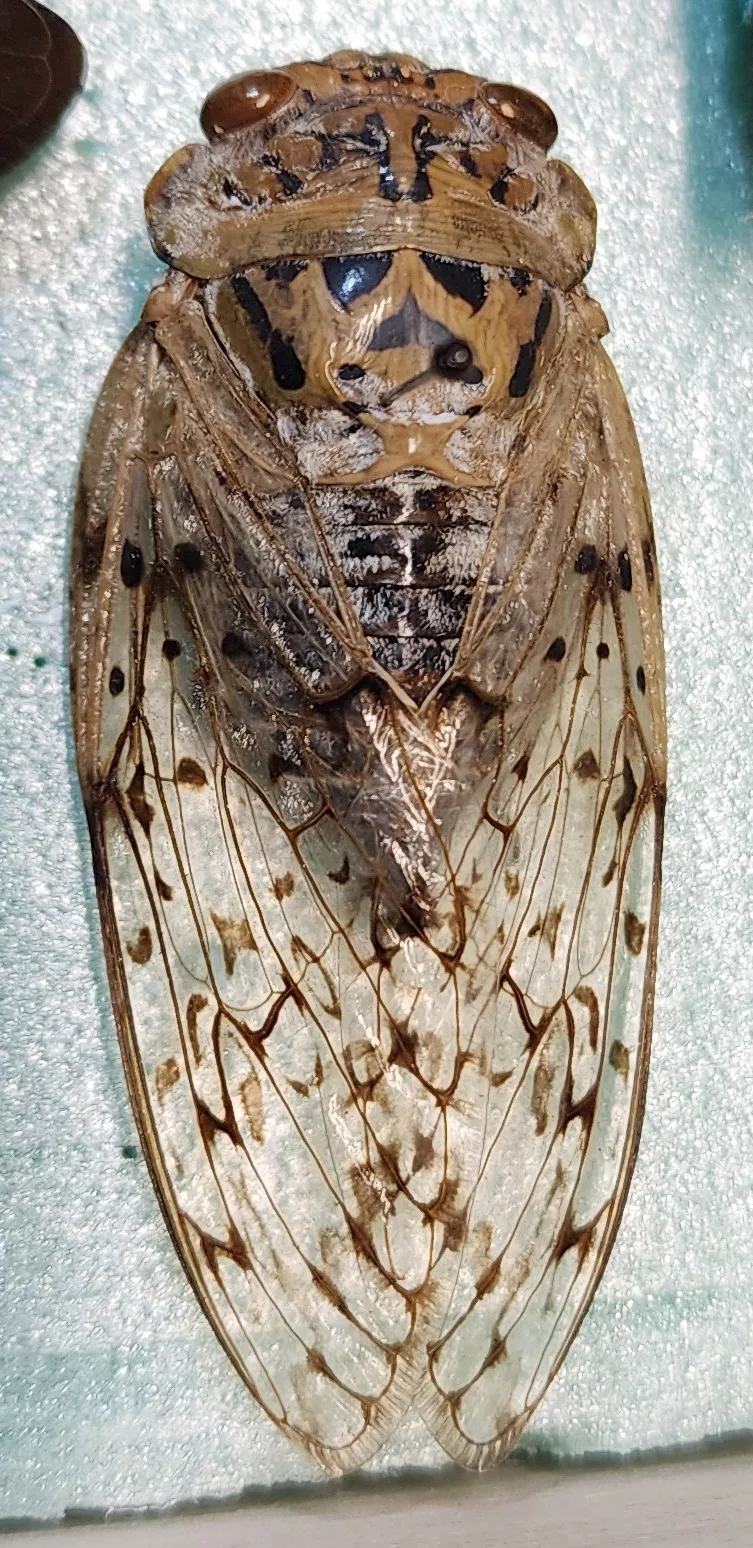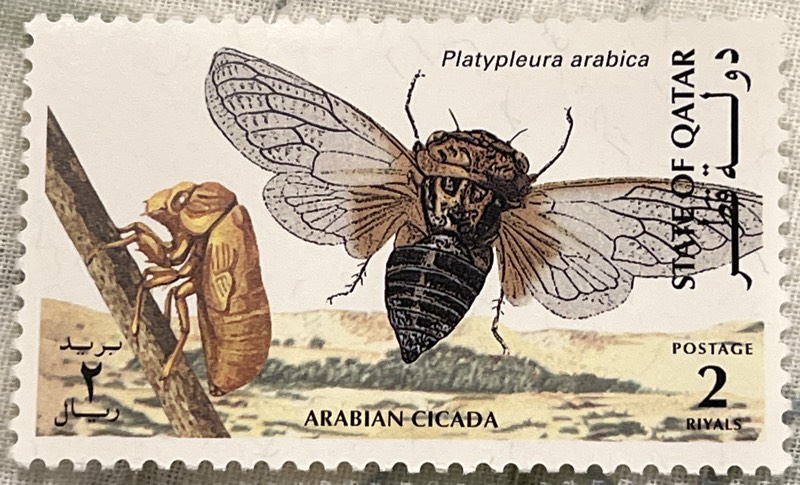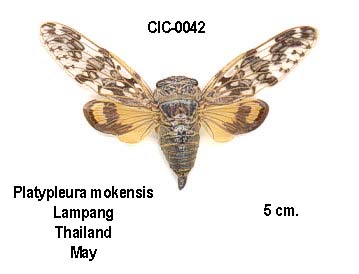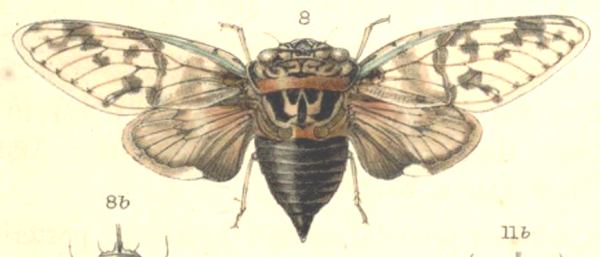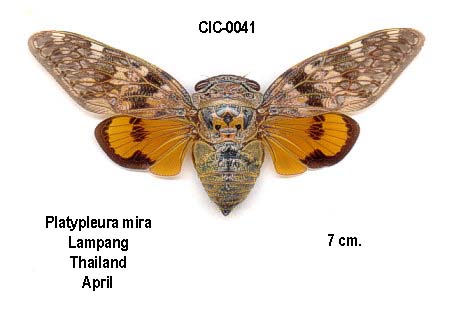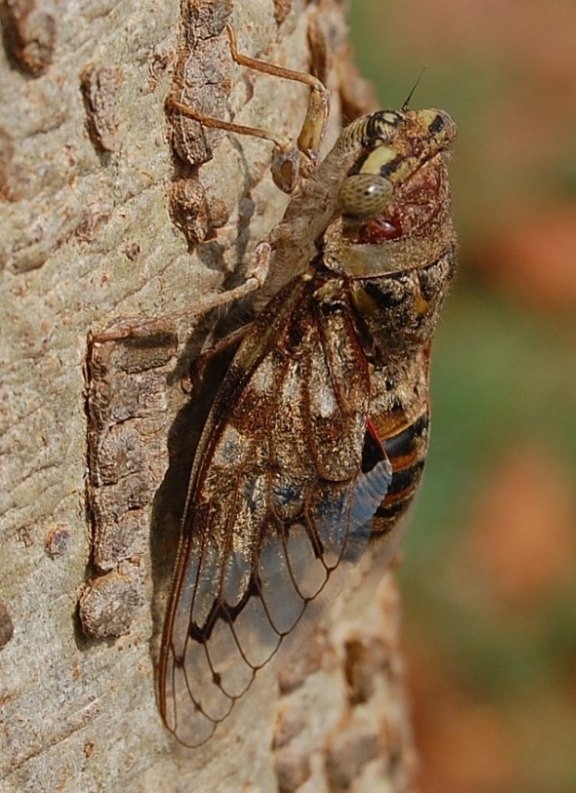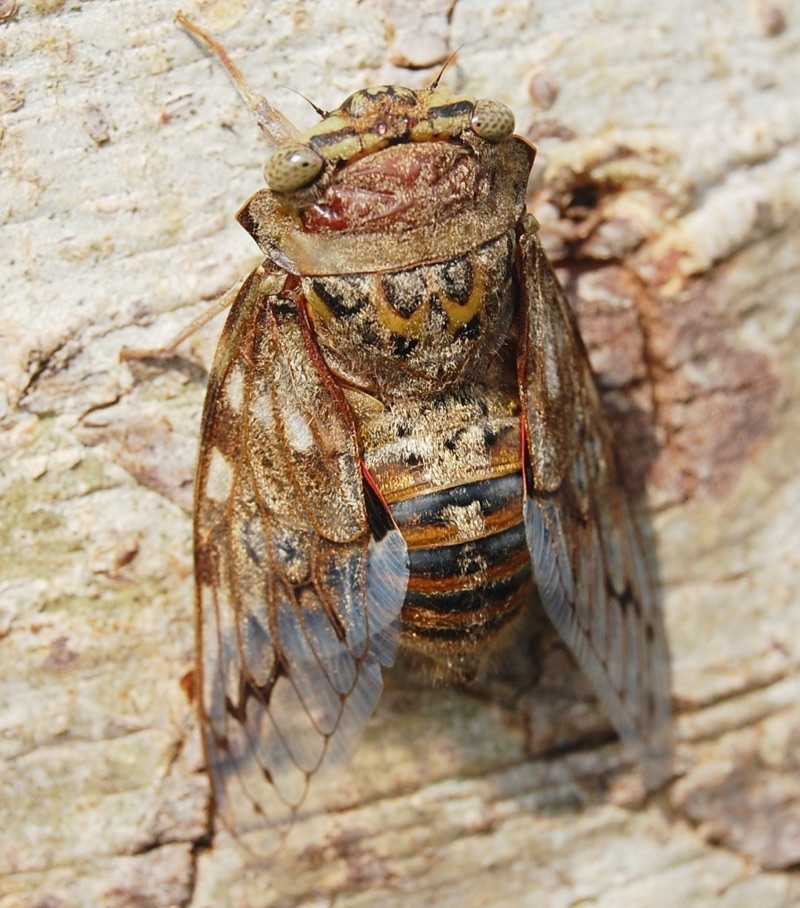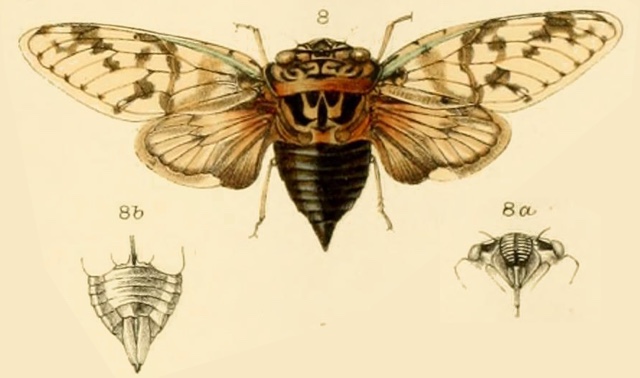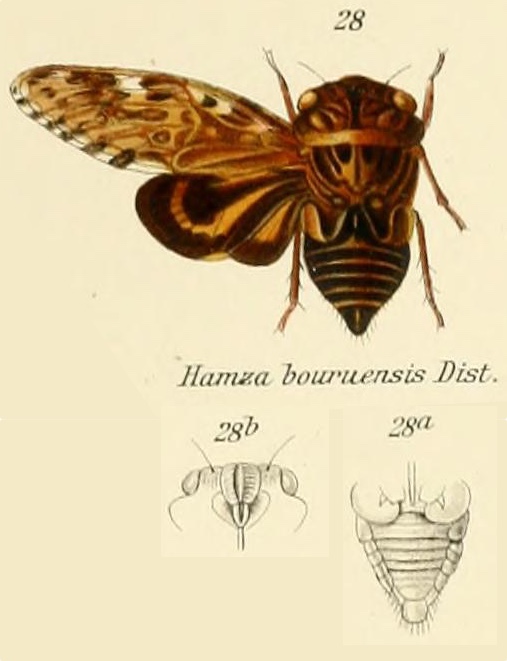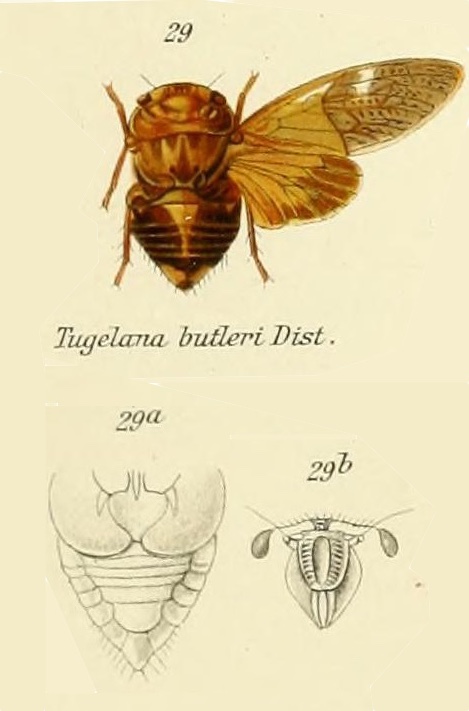This cicada is a Platypleura kaempferi. The photo comes from us from Richard Newfrock. Platypleura kaempferi is a member of the tribe Platypleurini. P. kaempfer is found in China, South Korea, Japan and other locations — even Poland (but that cicada was likely transported along with produce or in the root ball of a plant). Platypleura means flat/broad sides, and kaempferi likely refers to Emil Kaempfer or Kaempfer’s woodpecker, whose wing resembles the wing of the cicada.
There are three species of Platypleura kaempferi1 (I don’t know what distinguishes them. I don’t see the separate subspecies on iNaturalist either):
- P. kaempferi brevipennis Naruse, 1983, which seems to be found in Japan.
- P. kaempferi ridleyana Distant, 1905, which seems to be found exclusively in the Malay peninsula.
- P. kaempferi kaempferi (Fabricius, 1794), which is found throughout Asia.


Here’s the iNaturalist collection of Platypleura kaempferi photos.
Here’s a comparison of the wing of Kaempfer’s Woodpecker with out possible Platypleura kaempferi:
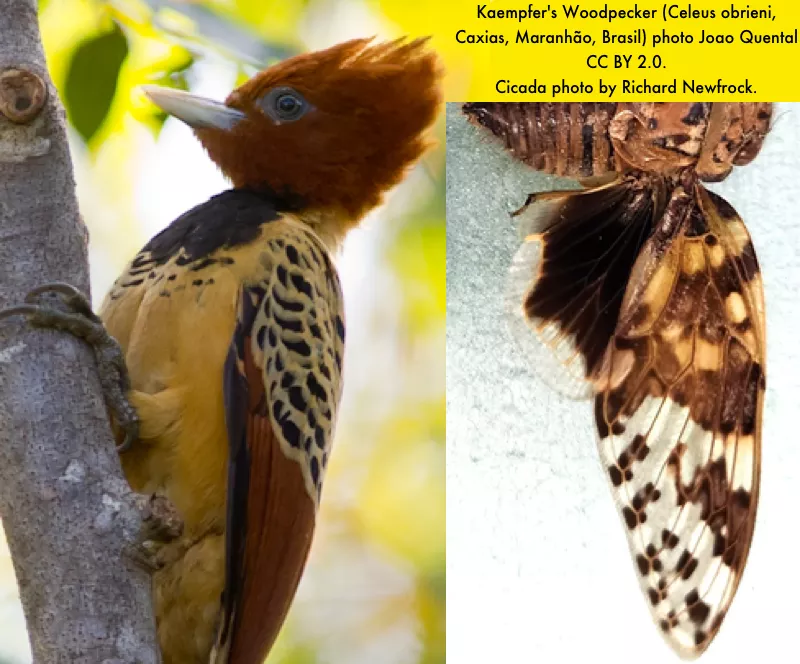
Although the woodpecker and cicada resemble each other, Yasumasa Saisho let us know that Platypleura kaempferi was described by the German biologist Engelbert Kämpfer, and its scientific name is derived from it.
Richard Newfrock took the photo of the cicada, and Joao Quental took the photo of Kaempfer’s Woodpecker (Celeus obrieni, Caxias, Maranhão, Brasil) which is under a CC BY 2.0 license.
1 Catalogue of the Cicadoidea (Hemiptera: Auchenorrhyncha). DOI: http://dx.doi.org/10.1016/B978-0-12-416647-9.00001-2 © 2014 Elsevier Inc.

